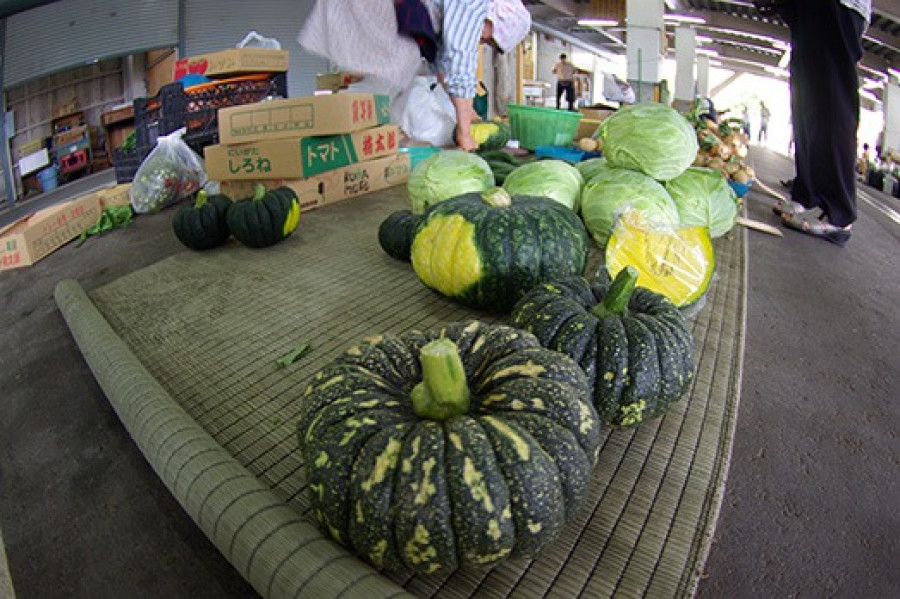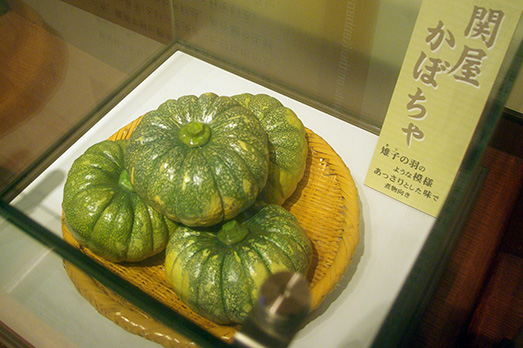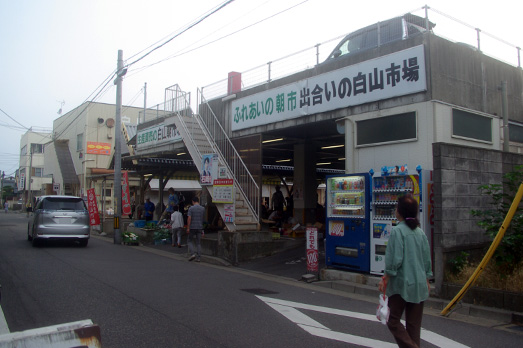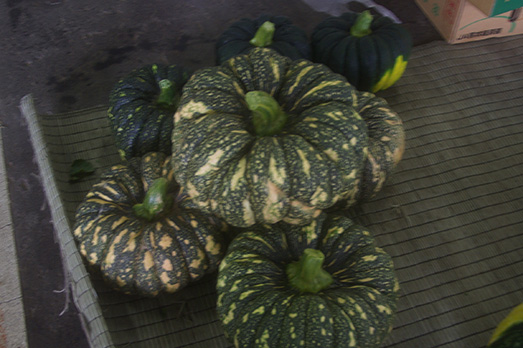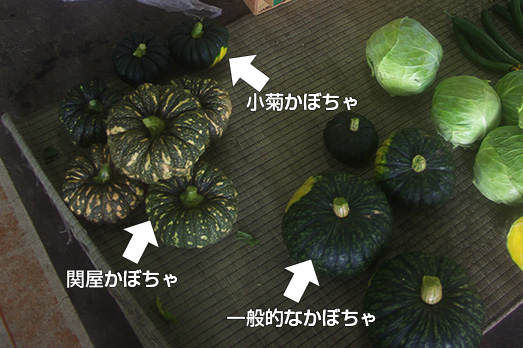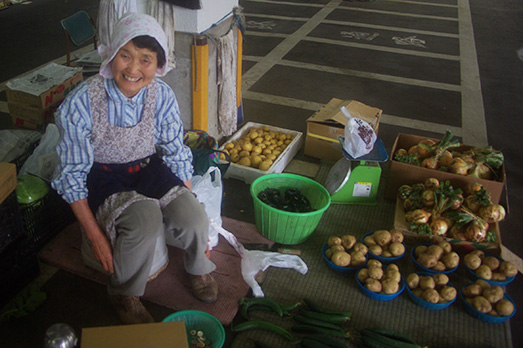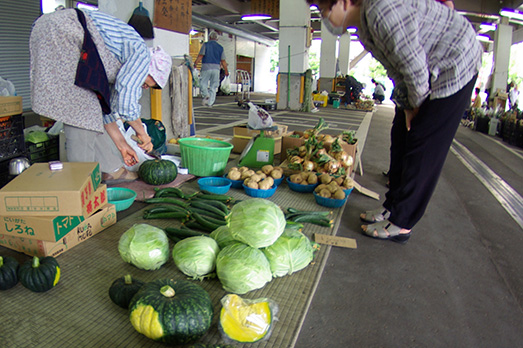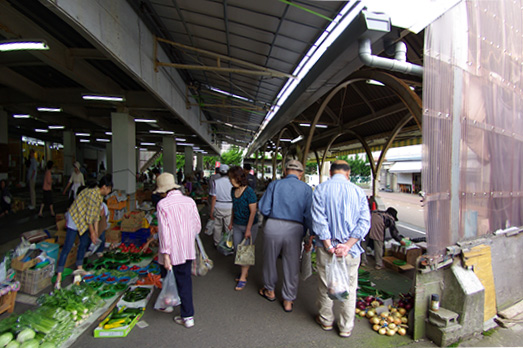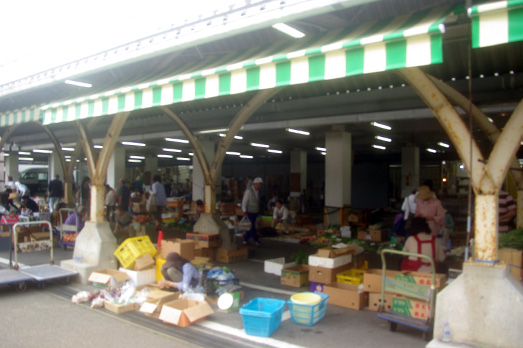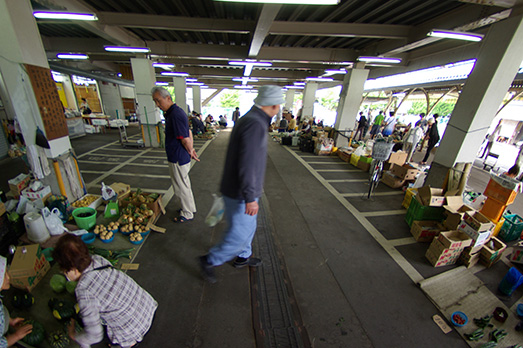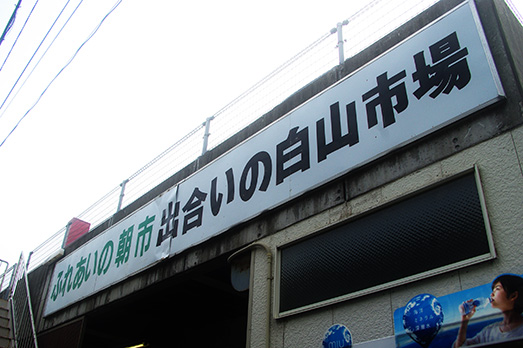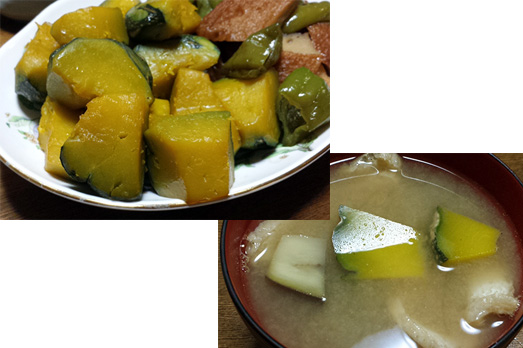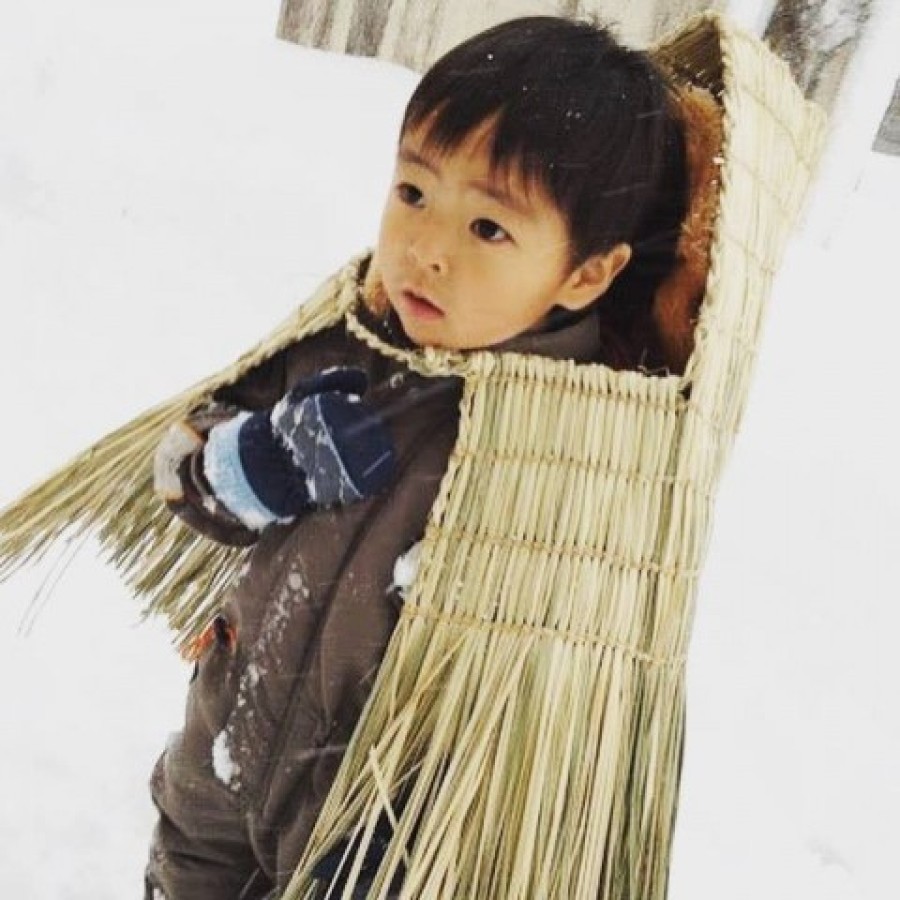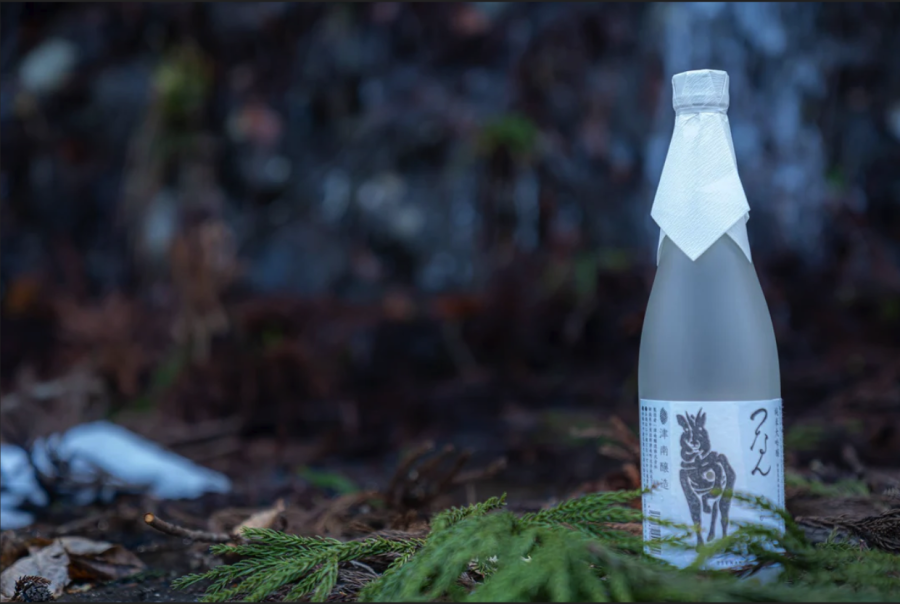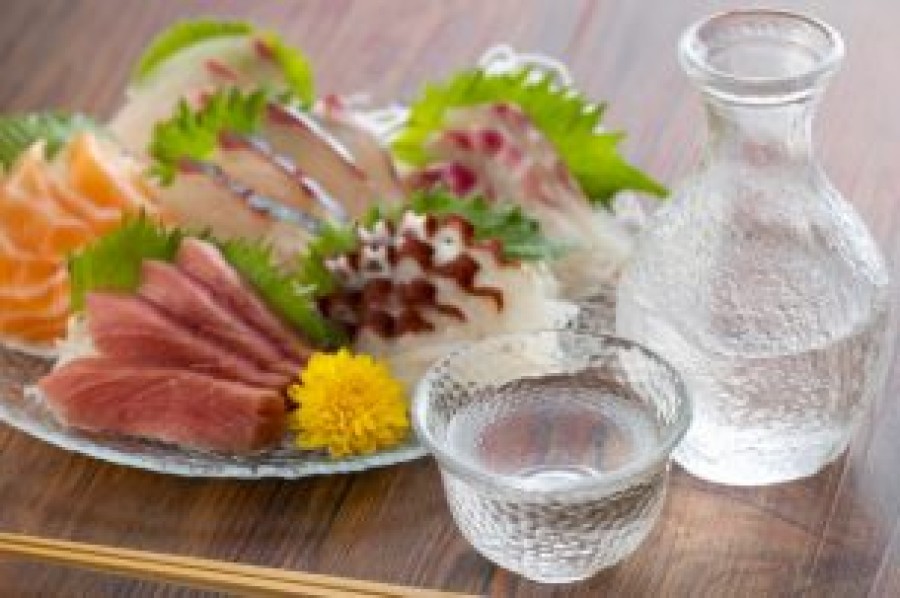Have you ever heard of Sekiya kabocha? I am ashamed to say that I didn't know about it until April, when I happened to visit the Niigata City History Museum "Minatopia" and saw it displayed as a traditional Niigata vegetable.
This is the 'Sekiya Kabocha' on display at the 'Minatopia'. The board also stated that 'only a few are produced nowadays, being pushed out by Western pumpkins'.
The name 'Sekiya pumpkin' suggests that it was probably grown in the Sekiya area, but few fields can be seen in the Sekiya area today.
But "only a few are made" means that even if only a few are grown, they are still grown, right? So I did a Google search...
An article on the blog of the 'Hakusan Market (Hakusan Market Commercial Cooperative)' was a hit. Apparently, maybe this is the place that handles 'Sekiya Pumpkin'?
I made an enquiry via the form on the blog and was told that everything would be available from late June onwards.
So, the long-awaited late June. With the cooperation of the Hakusan Market Commercial Cooperative, we went to cover the morning market at Hakusan Market!
Hakusan Market is located opposite Niigata Commercial High School, a five-minute walk straight north from JR Hakusan Station. We arrived at the market at exactly 6am. The market is already open.
I finally found it. This is Niigata's traditional vegetable 'Sekiya Kabocha'.
Compared to the 'common pumpkin' next to it, it is almost the same size, but has a pattern like a pheasant's feather. Originally called 'Aizu kabocha' (the Minatopia exhibition describes it as 'an improved 'Aizu early maturing' type pumpkin'), it used to be grown not only in Sekiya but also in the whole of the Niigata area.
The smaller one in the back is the "(Heisei) Kogiku Kabocha". This is also a type of Japanese pumpkin, the same as the 'Sekiya Pumpkin'.
Chieko Nakano is the producer of this Sekiya pumpkin, which has been sold at Hakusan Market since her parents' generation. She runs a farm in Nishi Ward and comes to Hakusan Market on Wednesdays, Saturdays and Sundays.
This was the first shipment of "Sekiya Pumpkins" of the season. The secretariat had contacted us in advance about this interview, so they had put one of the pumpkins on hold for us. (Two of the pumpkins in the photo have already been sold at this point.)
In the past, most of the pumpkins sold in Niigata were the Sekiya pumpkin. However, because of the time-consuming cultivation process, the sweeter and easier-to-cultivate Western pumpkin has taken over, and fewer farmers are producing it.
While we were talking to her, she asked, "Do you have Sekiya pumpkins? How much?" other customers would call out to them. It seems that many people have always liked Sekiya pumpkins.
When asked, it is said that 'Sekiya kabocha' is hard to boil and tastes like 'ohagi' (rice cakes). They say it is sweet and tasty and just right for simmering. Another said that it is also delicious in miso soup.
The last remaining piece during the interview was also sold and Mr Nakano's Sekiya pumpkin was sold out that day.
Since we were here, we asked Shinichiro Nakagawa, Chairman of the Board of Directors, to tell us about this Hakusan market.
This is Mr Nakagawa, the chairman of the board of directors. He found me wandering around with my camera and approached me. He is a farmer in the Toyoei area of Kita Ward.
The Hakusan Market Commercial Cooperative celebrated its 60th anniversary in February this year. The market was originally held on the streets around Niigata Prefectural Office (now Niigata City Hall), but was relocated to its current location about 40 years ago.
Morning markets are generally held on the streets of shopping streets, but Hakusan Market is held daily on a dedicated site. (The market has a roof that covers almost the entire site, with the second floor used as a parking lot.
It is very rare among market associations in the country to have their own premises and facilities.
Producers in the suburbs from the Chuo, Minami, Nishi and Kita wards are members of the cooperative and sell fresh produce and other products. As a result, fresh vegetables can be purchased directly from the producers at low prices. This is one of Niigata's representative morning markets, and has even been introduced in tourist guidebooks.
We asked about traditional Niigata vegetables other than 'Sekiya kabocha'. There are other traditional Niigata vegetables such as 'Yorii kabocha' and 'Aoyama leeks', but there are no longer any places producing 'Yorii kabocha'. Aoyama leeks are also rarely seen anymore.
There may be a surprising number of traditional vegetables that have disappeared in favour of western varieties because of the time and effort required to cultivate and produce them. A father next to me said that even 'Onna-ike-gai' might disappear in the near future.
On the other hand, there are also a number of Niigata vegetables that are still popular in recent years, such as 'yawa skin leeks' and 'yaki nasu'.
Before we knew it, it was around 7am. During the interview, a number of customers came to Nakagawa-san's shop to buy 'tomatoes'. Toyohide is also famous for its tomatoes as a speciality. However, they were already sold out that day.
The amount sold depends on the day's harvest, but if you want to shop, it is best to come around 6am.
Due to a lack of successors among farmers and other factors, the cooperative used to have nearly 400 members, but now has about 74. At its peak, the site was crowded with people who could not fit on the premises. Indeed, there are a few empty spaces here and there.
Consumers also buy more and more from supermarkets, and fewer people visit the market. The market used to be very busy with middlemen, inns and other businesses, as well as general consumers.
Even so, this Hakusan market attracts many fans from the surrounding and neighbouring areas. The market is not only a place to shop, but also a community space where you can enjoy various conversations with producers and other customers.
In fact, during the interview, I was also approached by other customers who told me that this pumpkin was delicious and told me how to eat it.
I had the 'Sekiya pumpkin' family cook it for dinner. I made it into a stew and miso soup. It was definitely more 'chunky' than the kabocha we usually eat. And it has a refreshing sweetness. The one I put in miso soup did not fall apart and was delicious too.
Even vegetables of the same variety will taste different depending on the quality and origins of the land, and farmers have their own particular tastes. It is a good idea to go to the Hakusan market to find vegetables with a flavour that suits you and your family.
In addition, an 'Edamame' tasting event will be held on 27 July, which is said to attract more visitors on this day. In November, Tonjiru (pork miso soup) is served as a customer appreciation event. Students from neighbouring schools, including Niigata Commercial High School right next door, sometimes open stalls and take part in events.
Why not wake up a little earlier and look for traditional vegetables and fresh produce at the Hakusan Market, a morning market in the city centre of Niigata?
Spotlight.
Hakusan Municipal Plaza (Hakusan Municipal Plaza Business Co-operation Group)
- Opening hours: from 5am to around 10am.
- Closed: - July-September, 1st and 3rd Tuesdays - Every Tuesday except during the above periods (open if the closed day is a public holiday).
- Niigata Hakusan Market's Fresh★Morning Market Blog (this is the blog of the Secretariat staff): http://haku3asa1.blog130.fc2.com/
advertisement


